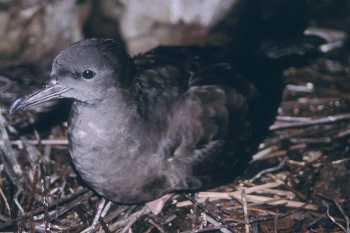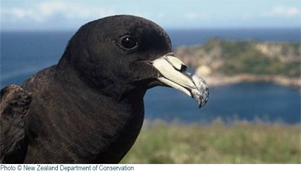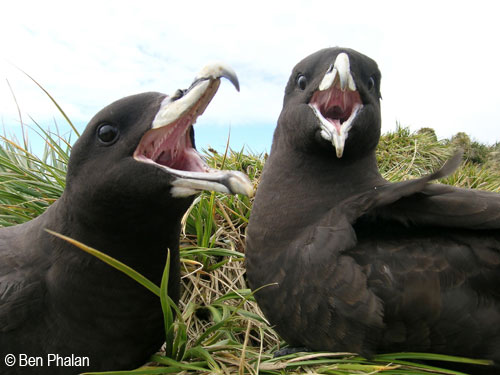A booklet entitled “Agreement on the Conservation of Albatrosses and Petrels Achievements in the First Ten Years 2004 – 2014” has been produced in the three ACAP official languages of English, French and Spanish by the ACAP Secretariat and the Advisory Committee’s Officials based on the inputs of ACAP Parties.
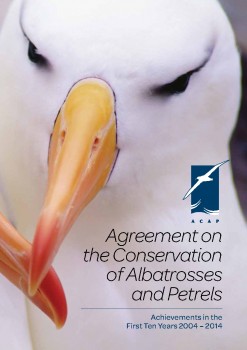
The preface of the booklet follows, written by ACAP’s Executive Secretary, Warren Papworth and Chair of its Advisory Committee (and Executive Secretary Elect) Marco Favero.
“The booklet’s purpose is to identify the main achievements of the Agreement and its Parties in improving the conservation status of the species listed in Annex 1, as well as to identify the key challenges remaining in its implementation. The reports in this booklet reveal the significant progress made by ACAP Parties in addressing threats to the survival of albatrosses and petrels, both on land and at sea. This work has been complemented by the activities of many non-Party Range States, such as Canada, Japan and the United States of America, who have actively participated in and supported the work of the Agreement, even though they are not signatories to it at this point in time. The active support of non-governmental organisations such as American Bird Conservancy, BirdLife International, Humane Society International, Pro Delphinus, Projeto Albatroz, Southern Seabird Solutions and World Wildlife Fund amongst others, has also been instrumental in the success that has been achieved in improving the conservation status of albatrosses and petrels globally.
The Agreement has played a crucial role in bringing together a global network of researchers and managers to identify threats to albatrosses and petrels, to prioritize conservation actions and to find effective solutions to them. Through the work of its Seabird Bycatch Working Group, it has identified effective measures that can be taken to prevent the bycatch of seabirds in longline and trawl fisheries, which together pose the greatest at-sea threat to the survival of many albatrosses and petrels. Similarly, ACAP’s Population and Conservation Status Working Group has developed guidelines that identify best-practice methods to address land-based threats at the breeding sites of these species. Significant progress has been achieved at some important breeding sites, where large-scale pest eradication programmes have been completed. The success of these programmes has in some cases been immediately noticeable, with a number of species returning to breed on these islands following the successful completion of the pest-eradication programmes. Threats from disease and introduced pests still threaten the survival of some species and it is important that the work of ACAP Parties continues at these breeding sites in the years ahead until these threats are addressed. The Agreement has also been instrumental in coordinating the development of effective seabird conservation measures in both domestic and high seas fisheries, in the latter case, through its Regional Fisheries Management Organisations (RFMO) engagement strategy. As a result of this work, many of the RFMOs whose fisheries overlap with the foraging areas of albatrosses and petrels have now adopted seabird conservation measures, based on ACAP’s best-practice advice. The challenge remains however to see the effective implementation of the conservation measures that have now been adopted. A lack of data has made it difficult to evaluate the extent to which these conservation measures have been implemented in many fisheries. To achieve ACAP’s objective of achieving and maintaining a favourable conservation status of albatrosses and petrels, it is essential that effective observer programmes and/or electronic monitoring programmes be put in place. The Convention on the Conservation of Antarctic Marine Living Resources (CCAMLR), which has 100% observer coverage in its longline fishing operations, has proven that the reduction of seabird bycatch to nil or negligible levels is possible in high seas fisheries. ACAP’s focus in the coming years must be to see this success replicated in other fisheries, to continue its work in addressing threats at breeding sites and to seek the active participation of those Range States who are not yet engaged in its work.”
Click to access the English, French and Spanish versions of the 10-year achievements booklet.
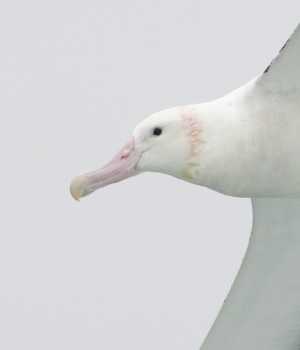
A Wandering Albatross flies by at sea, photograph by John Chardine
John Cooper, ACAP Information Officer, 04 August 2015
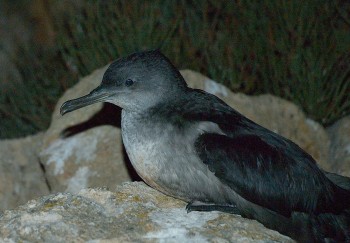

 English
English  Français
Français  Español
Español 